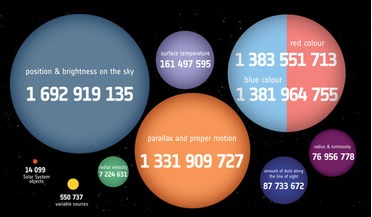 26 October 2016
Australian radio telescope shows the Universe in radio waves
26 October 2016
Australian radio telescope shows the Universe in radio waves
...different primary colours." A 'radio colour' view of the sky above a 'tile' of the Murchison Widefield Array radio ... The full results of the “GaLactic and Extragalactic All-sky Murchison Widefield Array (GLEAM) survey were published on October...
 September 2017
Telescope targets enigmatic deep space mystery
September 2017
Telescope targets enigmatic deep space mystery
... as 352 little telescopes all looking at the same patch of sky. Each of these 352 telescopes produces signals, which are digitised and...research is related to the attempts to search the radio sky for pulsars and fast transients and to rapidly and ...
 May 2018
PLATO the habitable zone explorer
May 2018
PLATO the habitable zone explorer
... one-year orbit, that would mean staring at the same patch of sky for several years with as few breaks as possible, hoping not to .... Kepler stared for four years at the same patch of sky, while K2, an ingenious extension of the Kepler mission using ...
 May 2022
Essential guide to the James Webb Space Telescope
May 2022
Essential guide to the James Webb Space Telescope
... protective atmosphere. Over 10 percent of the General Observer Programme is dedicated to studying the COSMOS field, a small patch of sky in the constellation Sextans used for studying galaxy evolution. Here, astronomers hope to detect the light from...
 25 April 2018
New Gaia data reveals details on over 1.6 billion stars
25 April 2018
New Gaia data reveals details on over 1.6 billion stars
... impressive feat of data collection by sweeping across the sky while taking observations in a large circular motion. “In...minute, Gaia measures about a hundred thousand stars on the sky,” said Anthony Brown, Gaia Data Processing and Analysis Consortium...
 September 2017
Science searches for cosmic company
September 2017
Science searches for cosmic company
... these instruments on existing radio telescopes. The search strategy was two-pronged: to scan the entire visible sky at relatively low sensitivity, and to zero in for a more intensive examination of approximately 1,000 nearby star systems. Although...